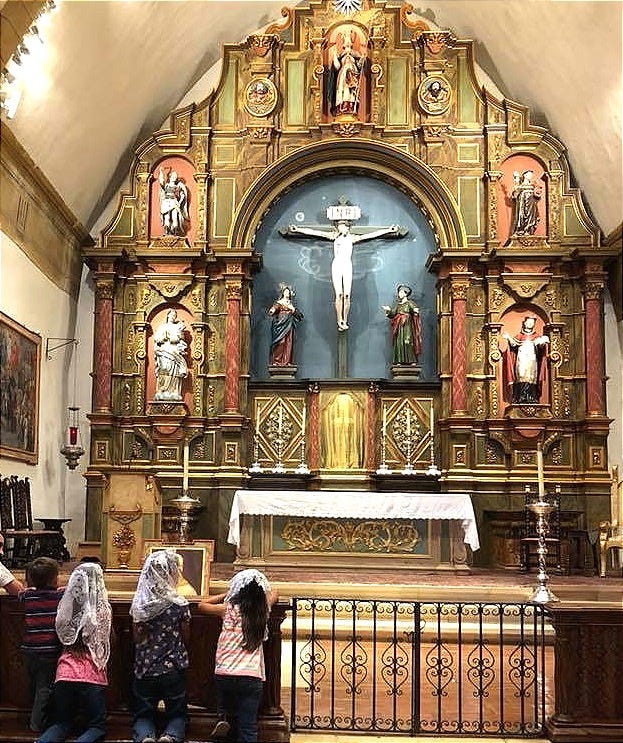The following are excerpts from my latest article at the National Catholic Register on how a woman veiling in Church symbolizes something theologically rich (though perhaps one could also extend this to a woman at Mass at all):
Alice von Hildebrand wrote in The Privilege of Being a Woman, “A veil symbolizes both mystery and sacredness,” giving examples of Moses veiling his face after speaking to God and the veil of the tabernacle in our churches. A woman veiling in the presence of the Eucharist also symbolizes a mystery and sacredness. It shows the mystery of transubstantiation and the mystery that every woman carries about in her person — always symbolizing the Church as bride, all creation.
The symbolism of a woman veiling before the Eucharist also has a sacred character. Woman, as Alice von Hildebrand points out, had the privilege of being formed from the body of a human person, differing from the man, who was formed from the ground. In Genesis 1:27, we see that God first created “man in his own image, in the image of God he created him” — “man” here meaning “humans.” Only secondly do we read that humans were created as men and women: “male and female he created them.” While there is a practical reason for this — that of the procreation of new humans — there is also a theological meaning to God creating humans as male and female. [. . .]

The union with God for which our souls are destined is the highest bridal state, and the sacrament of marriage should only be understood to be an image of this; thus, anything we think or say about men and women should be placed below the theology of God’s union with the soul, for the human bridal relation’s “highest meaning is its capacity to express a divine mystery.”
Theologically in a bridal union, the man represents Christ and the bride represents the Church. We see this in Ephesians 5:23: “For the husband is head of the wife as Christ is the head of the Church, his body, and is himself its Savior.” Yet the husband is also part of the Church, the bride of Christ, and he must take his model of how to be a bridegroom from Christ, who “gave himself up for” his bride (Ephesians 5:25). At the same time the woman shows the man how to be bridal in response to Christ — she is receptive in her body and must learn with all creatures how to be receptive with her soul.
Read the rest at the National Catholic Register.



